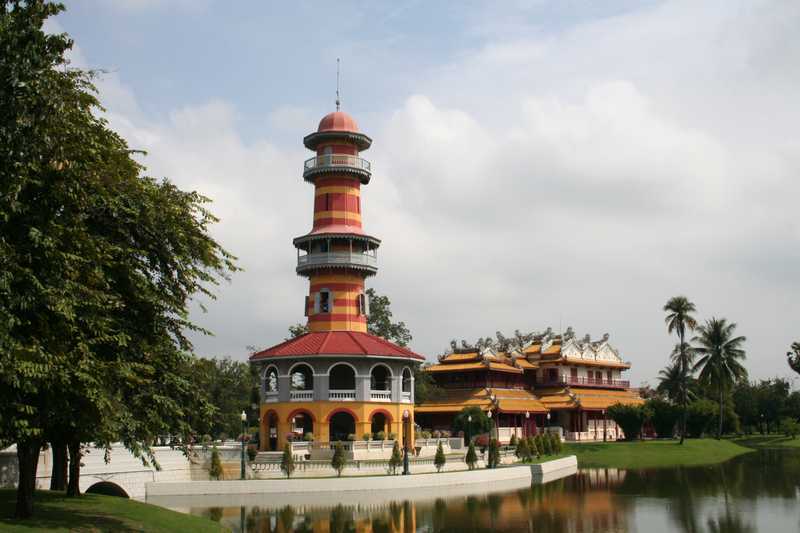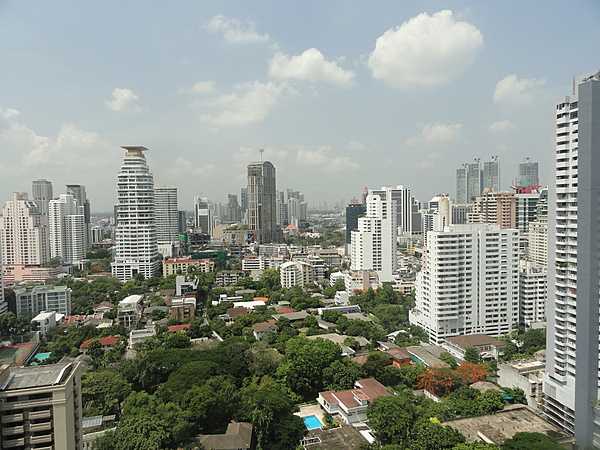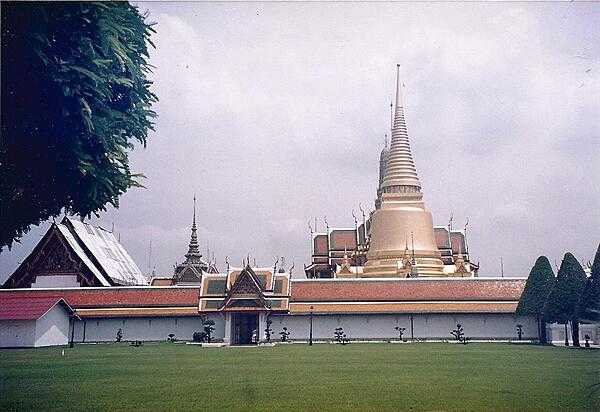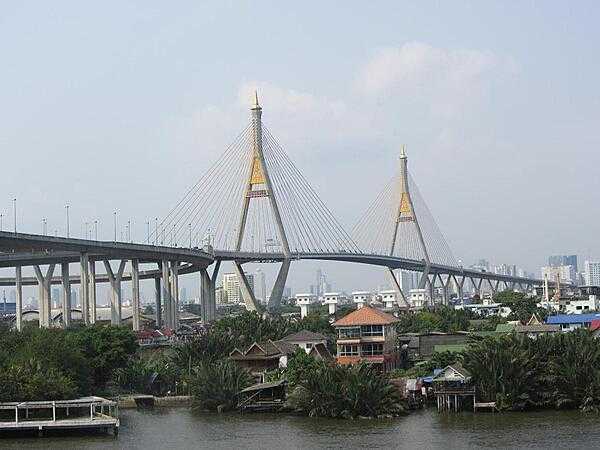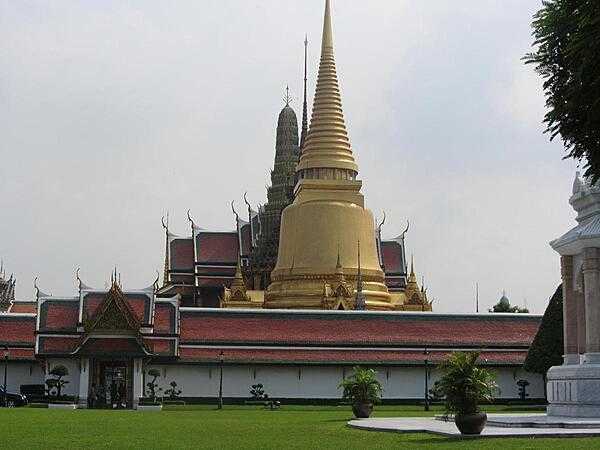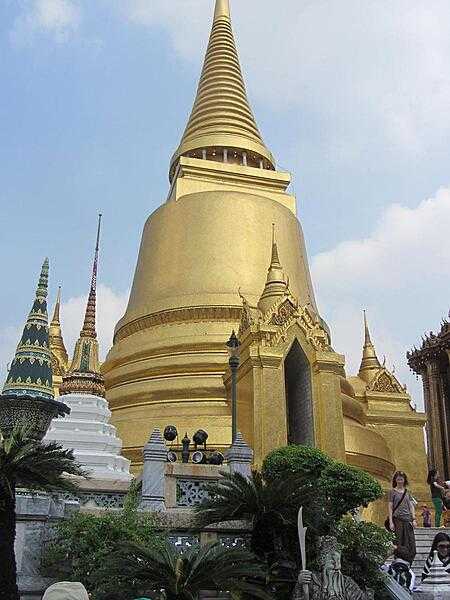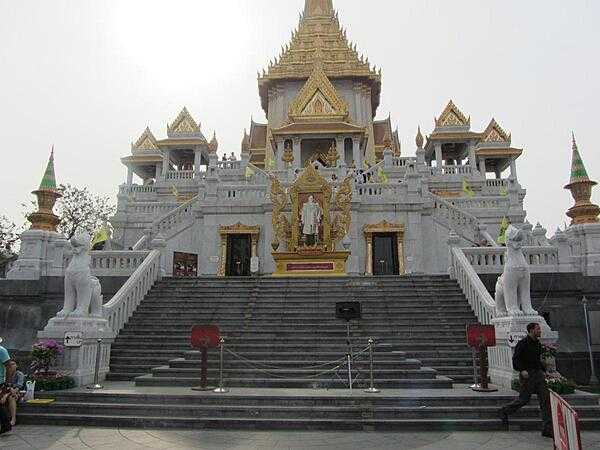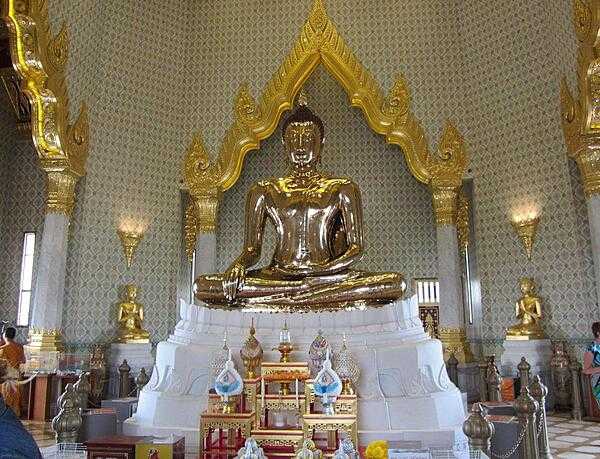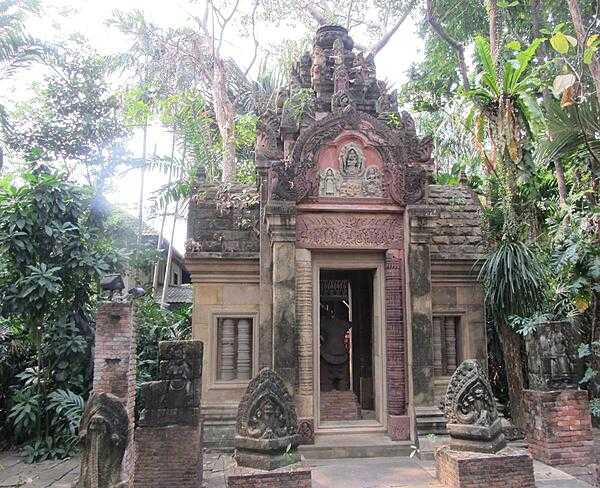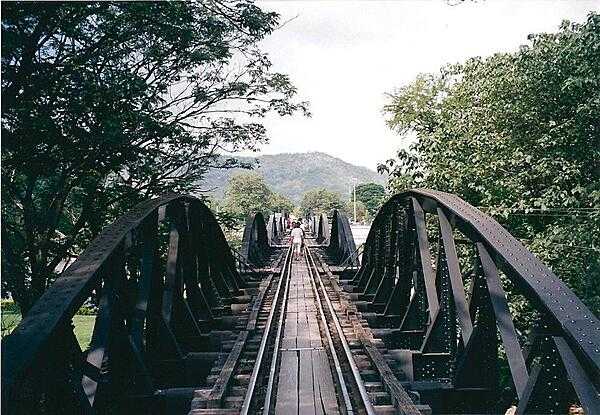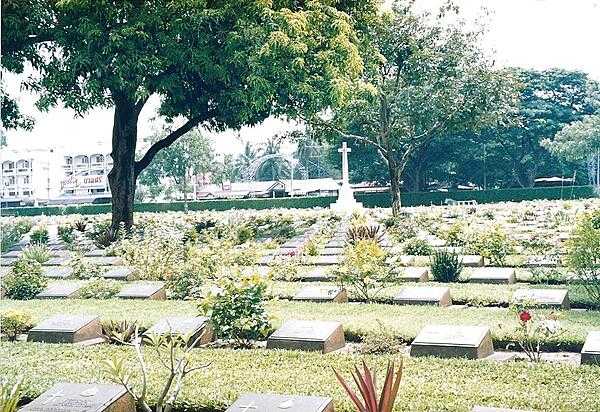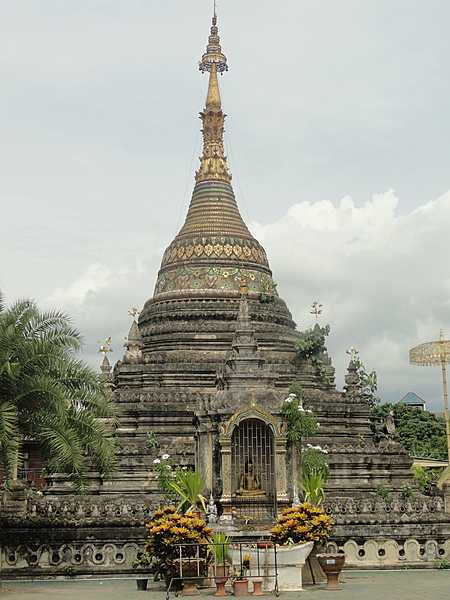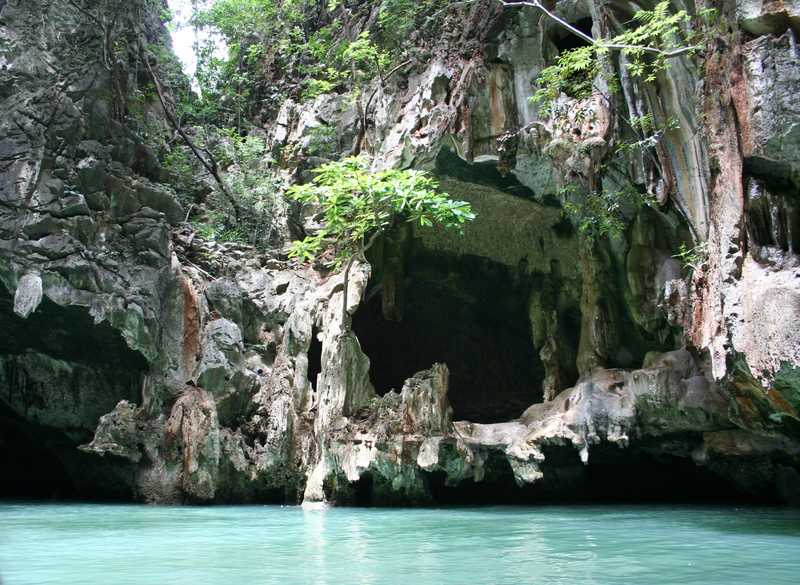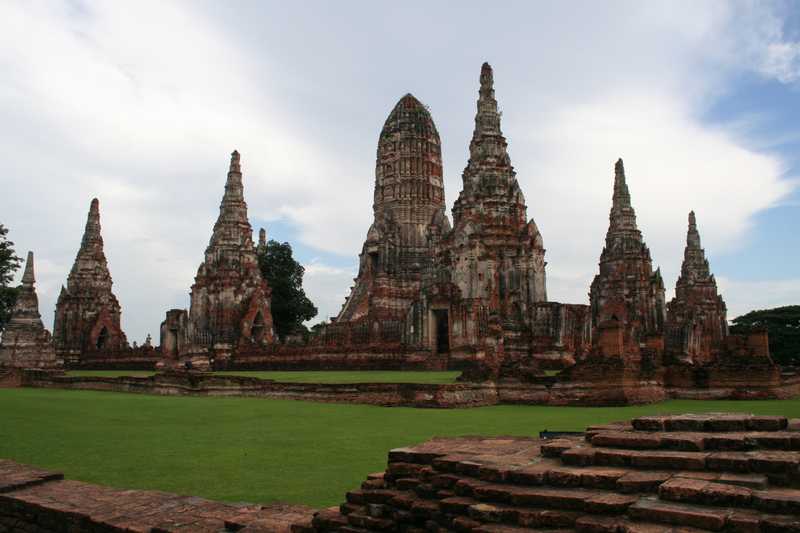Thailand - TH - THA - THA - East and Southeast Asia
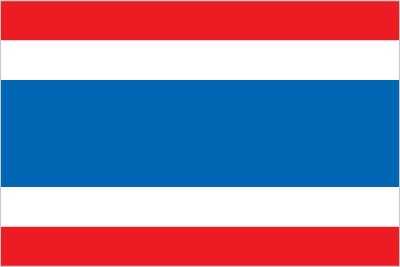

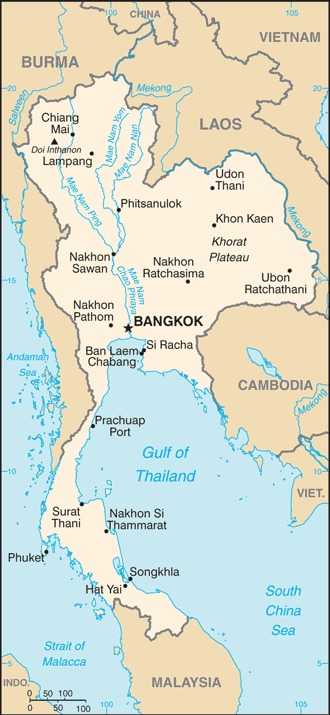
Thailand Images
Thailand Factbook Data
Diplomatic representation from the US
embassy: 95 Wireless Road, Bangkok 10330
mailing address: 7200 Bangkok Place, Washington DC 20521-7200
telephone: [66] 2-205-4000
FAX: [66] 2-205-4103
email address and website:
acsbkk@state.gov
https://th.usembassy.gov/
consulate(s) general: Chiang Mai
Age structure
15-64 years: 69% (male 23,681,528/female 24,597,535)
65 years and over: 15.1% (2024 est.) (male 4,714,191/female 5,863,754)
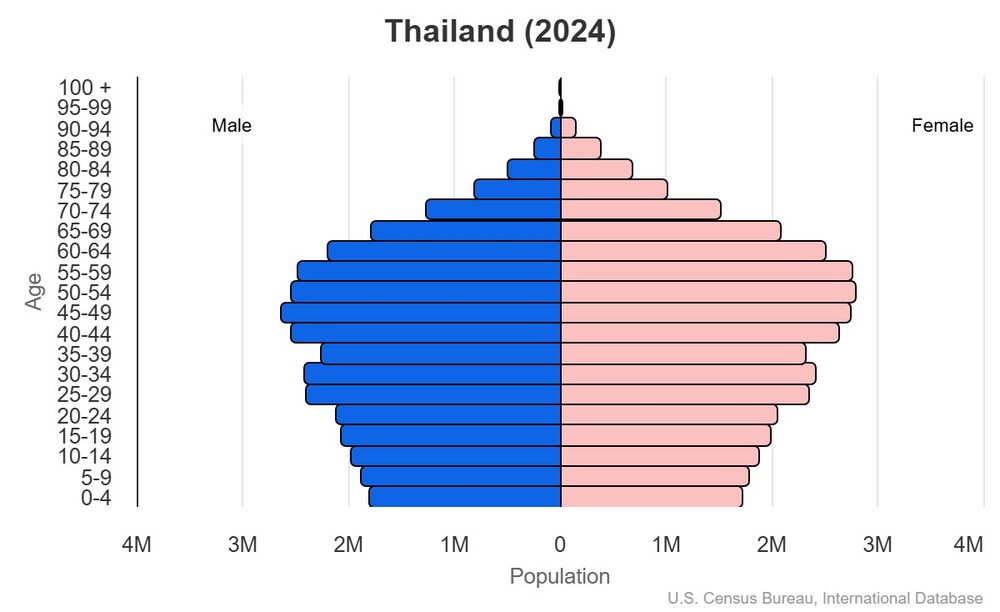
For additional information, please see the entry for Population pyramid on the Definitions and Notes page.
Geographic coordinates
Sex ratio
0-14 years: 1.05 male(s)/female
15-64 years: 0.96 male(s)/female
65 years and over: 0.8 male(s)/female
total population: 0.95 male(s)/female (2024 est.)
Natural hazards
Area - comparative
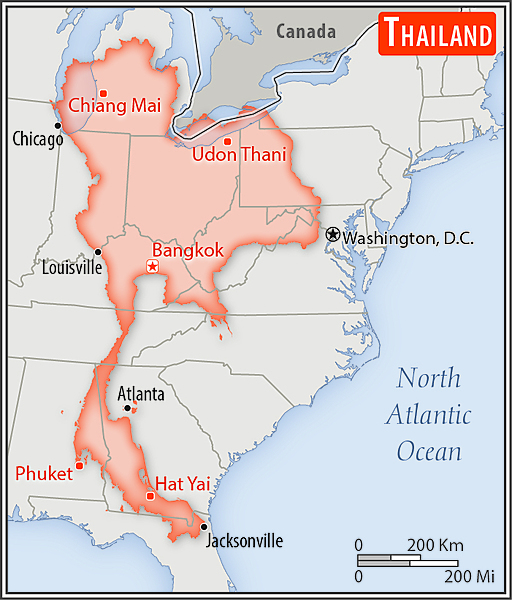
about three times the size of Florida; slightly more than twice the size of Wyoming
Military service age and obligation
note: serving in the armed forces is a national duty of all Thai citizens; conscription was introduced in 1905; it includes women, however, only men over the age of 21 who have not gone through reserve training are conscripted; conscripts are chosen by lottery (on draft day, eligible draftees can request volunteer service, or they may choose to stay for the conscription lottery); approximately 100,000 men are drafted for military service each year
Background
Two unified Thai kingdoms emerged in the mid-13th century. The Sukhothai Kingdom, located in the south-central plains, gained its independence from the Khmer Empire to the east. By the late 13th century, Sukhothai’s territory extended into present-day Burma and Laos. Sukhothai lasted until the mid-15th century. The Thai Lan Na Kingdom was established in the north with its capital at Chang Mai; the Burmese conquered Lan Na in the 16th century. The Ayutthaya Kingdom (14th-18th centuries) succeeded the Sukhothai and would become known as the Siamese Kingdom. During the Ayutthaya period, the Thai/Siamese peoples consolidated their hold on what is present-day central and north-central Thailand. Following a military defeat at the hands of the Burmese in 1767, the Siamese Kingdom rose to new heights under the military ruler TAKSIN, who defeated the Burmese occupiers and expanded the kingdom’s territory into modern-day northern Thailand (formerly the Lan Na Kingdom), Cambodia, Laos, and the Malay Peninsula. In the mid-1800s, Western pressure led to Siam signing trade treaties that reduced the country’s sovereignty and independence. In the 1890s and 1900s, the British and French forced the kingdom to cede Cambodian, Laotian, and Malay territories that had been under Siamese control.
Following a bloodless revolution in 1932 that led to the establishment of a constitutional monarchy, Thailand's political history was marked by a series of mostly bloodless coups with power concentrated among military and bureaucratic elites. Periods of civilian rule were unstable. The Cold War era saw a communist insurgency and the rise of strongman leaders. Thailand became a US treaty ally in 1954 after sending troops to Korea and later fighting alongside the US in Vietnam. In the 21st century, Thailand has experienced additional turmoil, including a military coup in 2006 that ousted then Prime Minister THAKSIN Chinnawat and large-scale street protests led by competing political factions in 2008-2010. In 2011, THAKSIN's youngest sister, YINGLAK Chinnawat, led the Puea Thai Party to an electoral win and assumed control of the government.
In 2014, after months of major anti-government protests in Bangkok, the Constitutional Court removed YINGLAK from office, and the Army, led by Gen. PRAYUT Chan-ocha, then staged a coup against the caretaker government. The military-affiliated National Council for Peace and Order (NCPO) ruled the country under PRAYUT for more than four years, drafting a new constitution that allowed the military to appoint the entire 250-member Senate and required a joint meeting of the House and Senate to select the prime minister -- which effectively gave the military a veto on the selection. King PHUMIPHON Adunyadet passed away in 2016 after 70 years on the throne; his only son, WACHIRALONGKON (aka King RAMA X), formally ascended the throne in 2019. The same year, a long-delayed election allowed PRAYUT to continue his premiership, although the results were disputed and widely viewed as skewed in favor of the party aligned with the military. The country again experienced major anti-government protests in 2020. The reformist Move Forward Party won the most seats in the 2023 election but was unable to form a government, and Srettha THRAVISIN from the Pheu Thai Party replaced PRAYUT as prime minister after forming a coalition of moderate and conservative parties.
Environmental issues
International environmental agreements
signed, but not ratified: none of the selected agreements
Military expenditures
1.3% of GDP (2023 est.)
1.3% of GDP (2022 est.)
1.3% of GDP (2021 est.)
1.4% of GDP (2020 est.)
Population below poverty line
note: % of population with income below national poverty line
Household income or consumption by percentage share
highest 10%: 26.1% (2023 est.)
note: % share of income accruing to lowest and highest 10% of population
Exports - commodities
note: top five export commodities based on value in dollars
Exports - partners
note: top five export partners based on percentage share of exports
Administrative divisions
Agricultural products
note: top ten agricultural products based on tonnage
Military and security forces
Office of the Prime Minister: Royal Thai Police (2025)
note: official paramilitary forces in Thailand include the Thai Rangers (Thahan Phran or "Hunter Soldiers") under the Army; the Paramilitary Marines under the Navy; the Border Patrol Police (BPP) under the Royal Thai Police; the Volunteer Defense Corps (VDC or O So) and National Defense Volunteers (NDV), both under the Ministry of Interior; there are also several government-backed volunteer militias created to provide village security against insurgents in the Deep South or to assist government security forces
Budget
expenditures: $114.521 billion (2023 est.)
note: central government revenues (excluding grants) and expenditures converted to US dollars at average official exchange rate for year indicated
Capital
geographic coordinates: 13 45 N, 100 31 E
time difference: UTC+7 (12 hours ahead of Washington, DC, during Standard Time)
etymology: the name is from the Thai words bang (region) and kok (olive trees); the city's full ceremonial name holds the world record for longest place name, Krungthepmahanakhon amonrattanakosin mahintharayutthaya mahadilokphop noppharatratchathaniburirom udomratchaniwetmahasathan amonphimanawatansathit sakkathattiyawitsanukamprasit, which means "City of angels, great city of immortals, magnificent city of the nine gems, seat of the king, city of royal palaces, home of gods incarnate, erected by Vishvakarman at Indra's behest"
Imports - commodities
note: top five import commodities based on value in dollars
Climate
Coastline
Constitution
amendment process: amendments require a majority vote in a joint session of the House and Senate and further require at least one fifth of opposition House members and one third of the Senate vote in favor; a national referendum is additionally required for certain amendments; all amendments require signature by the king
Exchange rates
Exchange rates:
35.294 (2024 est.)
34.802 (2023 est.)
35.061 (2022 est.)
31.977 (2021 est.)
31.294 (2020 est.)
Executive branch
head of government: Prime Minister ANUTIN Charnvirakul (since 5 Sep 2025)
cabinet: Council of Ministers nominated by the prime minister, appointed by the king; a Privy Council advises the king
election/appointment process: the monarchy is hereditary; prime minister candidate approved by House of Representatives and appointed by the king
Flag
meaning: red stands for the nation and the blood of life, white for religion and the purity of Buddhism, and blue for the monarchy
note: similar to the flag of Costa Rica, but with the blue and red colors reversed
Illicit drugs
major precursor-chemical producer (2025)
Independence
Industries
Judicial branch
judge selection and term of office: Supreme Court judges selected by the Judicial Commission of the Courts of Justice and approved by the monarch; judge term determined by the monarch; Constitutional Court justices - 3 judges drawn from the Supreme Court, 2 judges drawn from the Administrative Court, and 4 judge candidates selected by the Selective Committee for Judges of the Constitutional Court, and confirmed by the Senate; judges appointed by the monarch serve single 9-year terms; Supreme Administrative Court judges selected by the Judicial Commission of the Administrative Courts and appointed by the monarch; judges serve for life
subordinate courts: courts of first instance and appeals courts within both the judicial and administrative systems; military courts
Land boundaries
border countries (4): Burma 2,416 km; Cambodia 817 km; Laos 1,845 km; Malaysia 595 km
Land use
arable land: 31% (2023 est.)
permanent crops: 11.2% (2023 est.)
permanent pasture: 1.6% (2023 est.)
forest: 39% (2023 est.)
other: 17.2% (2023 est.)
Legal system
Legislative branch
legislative structure: bicameral
Literacy
male: 90.7% (2022 est.)
female: 91.5% (2022 est.)
Maritime claims
exclusive economic zone: 200 nm
continental shelf: 200-m depth or to the depth of exploitation
International organization participation
National holiday
Nationality
adjective: Thai
Natural resources
Geography - note
Economic overview
Political parties
Chat Thai Phatthana Party (Thai Nation Development Party) or CTP
Move Forward Party or MFP (dissolved by order of the Constitutional Court, August 2024)
Palang Pracharat Party (People's State Power Party) or PPRP
Pheu (Puea) Thai Party (For Thais Party) or PTP
Prachachat Party or PCC
Prachathipat Party (Democrat Party) or DP
Thai Sang Thai Party
United Thai Nation (Ruam Thai Sang Chat) or UTN
Railways
standard gauge: 84 km (2017) 1.435-m gauge (84 km electrified)
narrow gauge: 4,043 km (2017) 1.000-m gauge
Suffrage
Terrain
Government type
Country name
conventional short form: Thailand
local long form: Ratcha Anachak Thai
local short form: Prathet Thai
former: Siam
etymology: the name means "Land of the Thai," referring to the local population; the people's name comes from the Thai word tha, meaning "to be free;" the former name of Siam comes from the Sanskrit word syama, meaning "dark"
Location
Map references
Irrigated land
Diplomatic representation in the US
chancery: 1024 Wisconsin Avenue NW, Suite 401, Washington, DC 20007
telephone: [1] (202) 944-3600
FAX: [1] (202) 944-3611
email address and website:
thai.wsn@thaiembdc.org
https://washingtondc.thaiembassy.org/en/index
consulate(s) general: Chicago, Los Angeles, New York
Internet users
Internet country code
Refugees and internally displaced persons
IDPs: 19 (2023 est.)
stateless persons: 612,524 (2024 est.)
GDP (official exchange rate)
note: data in current dollars at official exchange rate
Total renewable water resources
School life expectancy (primary to tertiary education)
male: 16 years (2023 est.)
female: 16 years (2023 est.)
Urbanization
rate of urbanization: 1.43% annual rate of change (2020-25 est.)
Broadcast media
Drinking water source
urban: 100% of population (2022 est.)
rural: 100% of population (2022 est.)
total: 100% of population (2022 est.)
unimproved:
urban: 0% of population (2022 est.)
rural: 0% of population (2022 est.)
total: 0% of population (2022 est.)
National anthem(s)
lyrics/music: Luang SARANUPRAPAN/Phra JENDURIYANG
history: music adopted 1934, lyrics adopted 1939; it is the law that citizens stand and show respect for nation when the anthem is heard; the anthem is played each day at 8:00 am and 6:00 pm when the flag is raised and lowered
_____
title: "Phleng Sanlasoen Phra Barami" (A Salute to the Monarch)
lyrics/music: Narisara NUWATTIWONG and King VAJIRAVUDH/Pyotr SHCHUROVSKY
history: royal anthem, played in the presence of the royal family and during certain state ceremonies
Major urban areas - population
International law organization participation
Physician density
Hospital bed density
National symbol(s)
Mother's mean age at first birth
GDP - composition, by end use
government consumption: 16.7% (2024 est.)
investment in fixed capital: 22.2% (2024 est.)
investment in inventories: -0.6% (2024 est.)
exports of goods and services: 70.1% (2024 est.)
imports of goods and services: -66.7% (2024 est.)
note: figures may not total 100% due to rounding or gaps in data collection
Dependency ratios
youth dependency ratio: 22.9 (2024 est.)
elderly dependency ratio: 21.9 (2024 est.)
potential support ratio: 4.6 (2024 est.)
Citizenship
citizenship by descent only: at least one parent must be a citizen of Thailand
dual citizenship recognized: no
residency requirement for naturalization: 5 years
Population distribution
Electricity access
electrification - urban areas: 100%
electrification - rural areas: 100%
Civil aircraft registration country code prefix
Sanitation facility access
urban: 99.9% of population (2022 est.)
rural: 100% of population (2022 est.)
total: 100% of population (2022 est.)
unimproved:
urban: 0.1% of population (2022 est.)
rural: 0% of population (2022 est.)
total: 0% of population (2022 est.)
Ethnic groups
note: data represent population by nationality
Religions
Languages
major-language sample(s):
สารานุกรมโลก - แหล่งข้อมูลพื้นฐานที่สำคัญ (Thai)
The World Factbook, the indispensable source for basic information.
note: data represent population by language(s) spoken at home
Imports - partners
note: top five import partners based on percentage share of imports
Elevation
lowest point: Gulf of Thailand 0 m
mean elevation: 287 m
Health expenditure
16.1% of national budget (2022 est.)
Military - note
in July 2025, following months of rising tensions, the RTARF and Cambodian military forces clashed in multiple locations along their disputed border; both sides blamed the other for provoking the five-day conflict, which included cross-border artillery shelling by both sides and air attacks by RTARF fighter aircraft and drones; since 2004, the RTARF and Thai paramilitary forces have combated a separatist insurgency in the southern Thailand provinces of Pattani, Yala, and Narathiwat, as well as parts of Songkhla; the insurgency is rooted in ethnic Malay nationalist resistance to Thai rule that followed the extension of Siamese sovereignty over the Patani Sultanate in the 18th century; the insurgency consists of several armed groups, the largest of which is the Barisan Revolusi Nasional-Koordinasi (BRN-C): insurgent attacks have largely involved bombings; since 2020, Thai officials have been negotiating with BRN, and has parallel talks with an umbrella organization, MARA Pattani, that claims to represent the insurgency groups (2025)
Military and security service personnel strengths
Military deployments
Total water withdrawal
industrial: 2.777 billion cubic meters (2022 est.)
agricultural: 51.79 billion cubic meters (2022 est.)
Waste and recycling
percent of municipal solid waste recycled: 40% (2022 est.)
Average household expenditures
on alcohol and tobacco: 3% of household expenditures (2023 est.)
Major watersheds (area sq km)
Pacific Ocean drainage: Mekong (805,604 sq km)
Major lakes (area sq km)
Major rivers (by length in km)
note: [s] after country name indicates river source; [m] after country name indicates river mouth
National heritage
selected World Heritage Site locales: Historic City of Ayutthaya (c); Historic Sukhothai and Associated Historic Towns (c); Thungyai-Huai Kha Khaeng Wildlife Sanctuaries (n); Ban Chiang Archaeological Site (c); Dong Phayayen-Khao Yai Forest Complex (n); Kaeng Krachan Forest Complex (n); The Ancient Town of Si Thep and its Associated Dvaravati Monuments (n); Phu Phrabat, a testimony to the Sīma stone tradition of the Dvaravati period (c)
Child marriage
women married by age 18: 17% (2022)
men married by age 18: 5.8% (2022)
Coal
consumption: 42.371 million metric tons (2023 est.)
exports: 65,000 metric tons (2023 est.)
imports: 29.757 million metric tons (2023 est.)
proven reserves: 1.063 billion metric tons (2023 est.)
Electricity generation sources
solar: 2.7% of total installed capacity (2023 est.)
wind: 1.8% of total installed capacity (2023 est.)
hydroelectricity: 3.5% of total installed capacity (2023 est.)
biomass and waste: 10.1% of total installed capacity (2023 est.)
Natural gas
consumption: 52.351 billion cubic meters (2023 est.)
imports: 22.738 billion cubic meters (2023 est.)
proven reserves: 138.243 billion cubic meters (2021 est.)
Petroleum
refined petroleum consumption: 1.397 million bbl/day (2023 est.)
crude oil estimated reserves: 252.75 million barrels (2021 est.)
Gross reproduction rate
Currently married women (ages 15-49)
Remittances
1.9% of GDP (2023 est.)
1.8% of GDP (2022 est.)
note: personal transfers and compensation between resident and non-resident individuals/households/entities
Space program overview
Space launch site(s)
Space agency/agencies
note: GISTDA is under the Ministry of Higher Education, Science, Research and Innovation; the NSPC is an advisory body to the prime minister
Geoparks
global geoparks and regional networks: Khorat; Satun (2023)
Ports
large: 1
medium: 2
small: 3
very small: 15
ports with oil terminals: 14
key ports: Bangkok, Laem Chabang, Pattani, Phuket, Sattahip, Si Racha
Legislative branch - upper chamber
number of seats: 200 (all indirectly elected)
scope of elections: full renewal
term in office: 5 years
most recent election date: 6/9/2024 to 6/26/2024
percentage of women in chamber: 22.5%
expected date of next election: June 2029
note: Senate members are indirectly elected from 20 eligible groups of professions, including agriculture, artists or athletes, business owners, education, employees or workers, independent professionals, industrialists, law and justice, mass communication, public health, science and technology, tourism-related professions, women, and elderly, disabled, or ethnic groups
National coat of arms

National color(s)
Particulate matter emissions
Methane emissions
agriculture: 2,109.9 kt (2019-2021 est.)
waste: 635.8 kt (2019-2021 est.)
other: 57.9 kt (2019-2021 est.)
Key space-program milestones
1993 - first foreign-built commercial communications satellite (Thaicom-1) launched on European rocket
2008 - first remote sensing satellite (Theos-1; aka Thaichote) co-developed with France and launched by Russia
2018 - first domestically produced scientific/research satellite (KNACKSAT) launched by US
2024 - signed memorandum of understanding with China for cooperation on Beijing's lunar research station project and space exploration; signed US-led Artemis Accords
Labor force
note: number of people ages 15 or older who are employed or seeking work
Youth unemployment rate (ages 15-24)
male: 3.1% (2024 est.)
female: 6% (2024 est.)
note: % of labor force ages 15-24 seeking employment
Net migration rate
Median age
male: 40.2 years
female: 42.7 years
Debt - external
note: present value of external debt in current US dollars
Maternal mortality ratio
Reserves of foreign exchange and gold
$224.47 billion (2023 est.)
$216.501 billion (2022 est.)
note: holdings of gold (year-end prices)/foreign exchange/special drawing rights in current dollars
Public debt
note: central government debt as a % of GDP
Total fertility rate
Unemployment rate
0.8% (2023 est.)
1% (2022 est.)
note: % of labor force seeking employment
Population
male: 34,065,311
female: 35,855,687
Carbon dioxide emissions
from coal and metallurgical coke: 79.928 million metric tonnes of CO2 (2023 est.)
from petroleum and other liquids: 160.931 million metric tonnes of CO2 (2023 est.)
from consumed natural gas: 95.834 million metric tonnes of CO2 (2023 est.)
Area
land: 510,890 sq km
water: 2,230 sq km
Taxes and other revenues
note: central government tax revenue as a % of GDP
Real GDP (purchasing power parity)
$1.519 trillion (2023 est.)
$1.489 trillion (2022 est.)
note: data in 2021 dollars
Airports
Infant mortality rate
male: 6.9 deaths/1,000 live births
female: 5.6 deaths/1,000 live births
Telephones - mobile cellular
subscriptions per 100 inhabitants: 176 (2022 est.)
Gini Index coefficient - distribution of family income
note: index (0-100) of income distribution; higher values represent greater inequality
Inflation rate (consumer prices)
8.5% (2023 est.)
-1.6% (2022 est.)
note: annual % change based on consumer prices
Current account balance
$7.412 billion (2023 est.)
-$17.162 billion (2022 est.)
note: balance of payments - net trade and primary/secondary income in current dollars
Real GDP per capita
$21,200 (2023 est.)
$20,800 (2022 est.)
note: data in 2021 dollars
Broadband - fixed subscriptions
subscriptions per 100 inhabitants: 16 (2023 est.)
Tobacco use
male: 36.1% (2025 est.)
female: 1.6% (2025 est.)
Obesity - adult prevalence rate
Energy consumption per capita
Death rate
Birth rate
Electricity
consumption: 215.281 billion kWh (2023 est.)
exports: 2.256 billion kWh (2023 est.)
imports: 35.805 billion kWh (2023 est.)
transmission/distribution losses: 14.44 billion kWh (2023 est.)
Merchant marine
by type: bulk carrier 28, container ship 28, general cargo 88, oil tanker 251, other 489
Children under the age of 5 years underweight
Imports
$327.008 billion (2023 est.)
$334.44 billion (2022 est.)
note: balance of payments - imports of goods and services in current dollars
Exports
$337.45 billion (2023 est.)
$324.111 billion (2022 est.)
note: balance of payments - exports of goods and services in current dollars
Heliports
Telephones - fixed lines
subscriptions per 100 inhabitants: 6 (2023 est.)
Alcohol consumption per capita
beer: 1.85 liters of pure alcohol (2019 est.)
wine: 0.23 liters of pure alcohol (2019 est.)
spirits: 4.78 liters of pure alcohol (2019 est.)
other alcohols: 0 liters of pure alcohol (2019 est.)
Life expectancy at birth
male: 75.2 years
female: 81.3 years
Real GDP growth rate
2% (2023 est.)
2.6% (2022 est.)
note: annual GDP % growth based on constant local currency
Industrial production growth rate
note: annual % change in industrial value added based on constant local currency
GDP - composition, by sector of origin
industry: 32.1% (2024 est.)
services: 59.2% (2024 est.)
note: figures may not total 100% due to non-allocated consumption not captured in sector-reported data
Education expenditure
12.6% national budget (2025 est.)
Population growth rate
Legislative branch - lower chamber
number of seats: 500 (all directly elected)
electoral system: mixed system
scope of elections: full renewal
term in office: 4 years
most recent election date: 5/14/2023 (dissolved on 12 December 2025)
parties elected and seats per party: Move Forward (151); Pheu Thai (141); Bhumjaithai (71); Palang Pracharath (40); United Thai Nation (36); Democrat Party (25); Other (36)
percentage of women in chamber: 19.6%
expected date of next election: 8 February 2026
